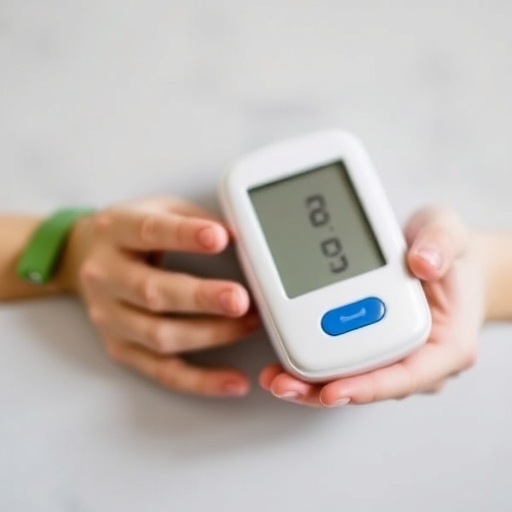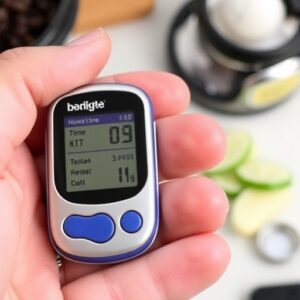When I decided to take my fitness seriously, I thought I had everything figured out: eat healthier, exercise regularly, and stay consistent. But there was one critical piece of the puzzle I didn’t fully understand—blood sugar management. Looking back, I realize how much smoother my journey would have been if I had known what I know now.
Whether you’re new to fitness or looking to refine your routine, understanding the connection between exercise, nutrition, and blood sugar can make all the difference. Here’s what I wish I’d known before starting my fitness journey.
1. Exercise Impacts Blood Sugar More Than You Think
I assumed all exercise would automatically improve my blood sugar, but it turns out the type and intensity of exercise can affect your levels in different ways:
- Cardio (e.g., running or cycling): Typically lowers blood sugar levels because your muscles use glucose for energy.
- High-Intensity Workouts: Can cause temporary spikes due to stress hormones like adrenaline, even though they benefit insulin sensitivity over time.
- Strength Training: Helps build muscle, which improves your body’s ability to use glucose efficiently, but its effects on blood sugar may not be immediate.
Knowing this upfront would have saved me from frustration when my glucose readings fluctuated after certain workouts.
2. Timing Your Meals is Key
In the early days, I’d often skip meals before workouts or indulge in a big carb-heavy snack after exercising. Both approaches left me feeling sluggish and sometimes caused unpredictable blood sugar spikes or crashes.
Now I know:
- Eating a balanced meal with protein, healthy fats, and some carbs 2–3 hours before exercise fuels your body and stabilizes blood sugar.
- A light snack like a handful of nuts or Greek yogurt 30 minutes before can provide quick energy for intense workouts.
Post-workout, pairing a lean protein with complex carbs (like grilled chicken and quinoa) helps replenish energy without causing sharp blood sugar spikes.
3. Hydration is More Important Than I Realized
I always knew hydration was essential for performance, but I didn’t realize its impact on blood sugar. Dehydration can make blood sugar levels harder to control because less water in your bloodstream means higher glucose concentrations.
Now, I make it a priority to drink water consistently throughout the day, especially during workouts. Adding electrolytes on intense training days has been a game-changer for both my energy and blood sugar stability.
4. Rest and Recovery Matter Just as Much as Exercise
In my eagerness to get fit, I overtrained and underestimated the importance of rest days. What I didn’t know is that poor recovery can lead to elevated stress hormones, like cortisol, which can raise blood sugar levels.
Now, I schedule at least one full rest day per week and incorporate light activities like stretching or yoga to help my body recover. Better recovery has improved both my workouts and my blood sugar management.
5. Tracking Blood Sugar Levels Helps Optimize Your Fitness Routine
I didn’t start tracking my blood sugar until much later in my fitness journey, but when I did, it changed everything. Using a continuous glucose monitor (CGM) or regular finger-prick tests gave me real insights into how my body responds to different workouts and meals.
For example, I discovered:
- Morning workouts tend to lower my fasting glucose levels.
- High-carb meals before exercise give me energy but can cause spikes if I don’t balance them with protein or fat.
- Post-workout glucose dips are a sign my body is recovering properly.
This data allowed me to fine-tune my routine for better results and overall health.
6. Stress Management is Essential
I didn’t realize how much stress could interfere with both my fitness progress and blood sugar management. Stress from daily life, combined with the physical stress of intense workouts, sometimes caused my blood sugar to stay elevated—even when I thought I was doing everything right.
Now, I’ve made stress management part of my fitness plan by:
- Practicing mindfulness or meditation after workouts.
- Prioritizing sleep to support recovery and lower cortisol levels.
- Balancing intense workouts with restorative activities like yoga or walking.
7. Progress Isn’t Linear—And That’s Okay
One of the most frustrating parts of my journey was expecting immediate results. I thought my blood sugar would stabilize quickly and my fitness goals would fall into place. But progress takes time, and fluctuations are normal.
What I’ve learned is to focus on trends, not individual readings. Celebrating small wins—like improving my endurance or consistently making healthier food choices—has kept me motivated.
Final Thoughts
If I could go back and start my fitness journey with the knowledge I have now, I’d approach it with more patience, balance, and understanding of how my body works. Blood sugar management isn’t just about avoiding spikes or crashes—it’s about creating a lifestyle that supports your overall well-being.
If you’re starting your own fitness journey, take the time to learn how your body responds to exercise, food, and stress. Listen to what it’s telling you, and don’t be afraid to adjust your routine as needed.
What lessons have you learned about blood sugar management during your fitness journey? Share your story in the comments below, and explore more tips at BloodSugarHealthy.com.





